French Art of Training a Tree to Grow on a Wall

Editor's Note: This is a invitee post from MovNat founder Erwan Le Corre.
Fitness, as we know information technology today, seems to be a relatively modern invention – something that started vaguely in the 70s with jogging and Jazzercise. But concrete exercise obviously goes dorsum much further than that, to a time where people wouldn't have idea of it equally working out, but rather a way of life. Centuries and millennia ago, they did not have all the machines and weights and gyms that we have today, and yet they were in better shape than we are. To understand why this is, how nosotros got to our modern fitness culture, and what we accept lost along the way, information technology's helpful to have a look at the history of exercise.
In a previous article on the philosophy of "MovNat," I briefly talked about the history of physical training earlier there were modern gyms and workout programs. This article is a more detailed overview of exercise throughout fourth dimension, from its ancestral origins, to the early on history of physical educational activity in Europe and America, to today's plethora of fitness modalities, sports, and activities.
Fundamental Times: Movement For Your Life!
From the dawn of humankind to around 10,000 BC, men had a constant voice in the dorsum of their head maxim, "Run for your life!" Physical evolution followed a natural path that was adamant by the practical demands of life in a wild landscape too as the vital need to avoid threats and seize opportunities for survival.
One's movement demands consisted of locomotion, the manipulation of tools and natural objects (rocks, tree limbs, etc.), and defense. To survive in a harsh environment full of natural and human being obstacles and enemies, early man had to know not only how to run, simply too walk, residual, bound, crawl, climb, lift, deport, throw and catch things, and fight. We tin can also safely presume that playful or creative moves like early forms of dancing were performed when bellies were total and predators weren't around.
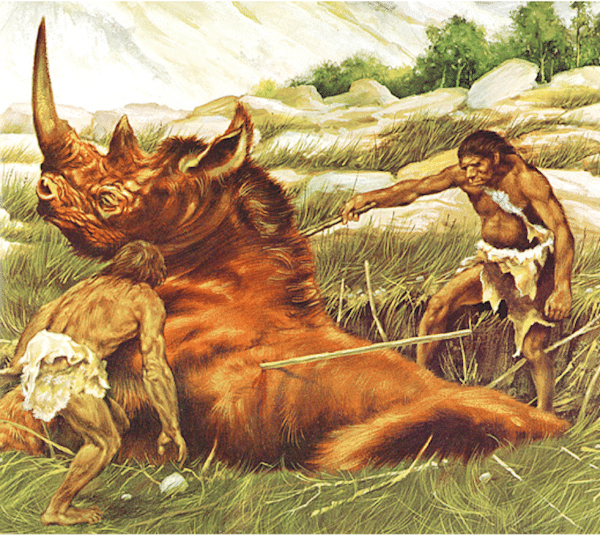
"Any idea how many calories nosotros've burned?"
The force and mobility of early human being was non developed through structured programs, methods, or schedules, but rather was forged by the daily, instinctive, necessity-driven practice of highly practical and adaptable movement skills. Today, the few hunter-gatherer tribes which nonetheless exist around the earth would have no idea what "primal fitness" or a "caveman workout" is, as this kind of "practise" remains deeply ingrained in their everyday lives.

In hunter-gatherer tribes, anybody had to be potent — men, women, and children alike. Here we see walking, balancing, and carrying — all at once. It doesn't get any more "functional" than this.
Neolithic Times: Crop Culture

Starting betwixt 10,000 and 8,000 BC, the Agricultural Revolution is ofttimes considered to exist the dawn of civilization.
Man's transition from nomadic hunter-gatherer to farmer led to dramatic changes in his physical activeness. The numerous demands of growing food and raising cattle meant a lot of chores and a lot of daily labor for farmers. But these tasks were largely repetitive, and required a very limited range of motility. At the same time, the need for performing a variety of complex movements — running, balancing, jumping, crawling, climbing — greatly macerated. Such movements were rarely performed in a farm surroundings, or were performed in much simpler ways; for instance, climbing a ladder is safer and more constrained and predictable than climbing trees.
Ancient Times: Prepared for War
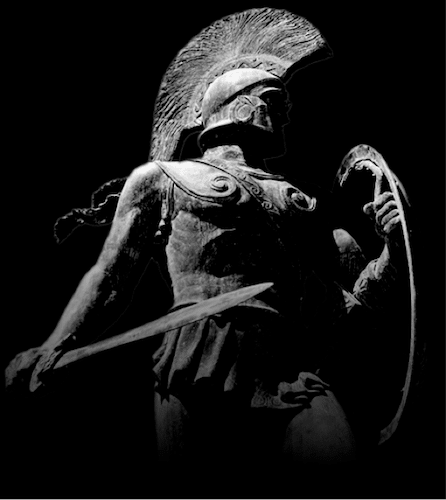
Between iv,000 BC and the fall of the Roman Empire in 476 Ad, civilizations rose and fell through war and conquest. Assyrians, Babylonians, Egyptians, Persians, and later on, the Greeks and Romans all imposed physical grooming on boys and young men. The purpose? Preparing for boxing.
Ancient military training had similarities to the movements performed in nature by our cavemen brethren, but with more structure and a different finish goal. Immature men practiced fundamental skills such as walking and running on uneven terrains, jumping, itch, climbing, lifting and carrying heavy things, throwing and catching, unarmed fighting, and weapons grooming.
Civilized populations valued physical civilisation for sports likewise. Records of athletic competitions be from ancient Egypt, and of course, the ancient Greeks famously created the commencement Olympic games. Not surprisingly, these early sports were all based on practical, natural motion skills and were fundamentally related to the preparedness needed for war — the Greeks strove to all-time each other in running (sometimes with armor and shield), jumping, throwing (javelin or discus), and fighting (striking and wrestling).

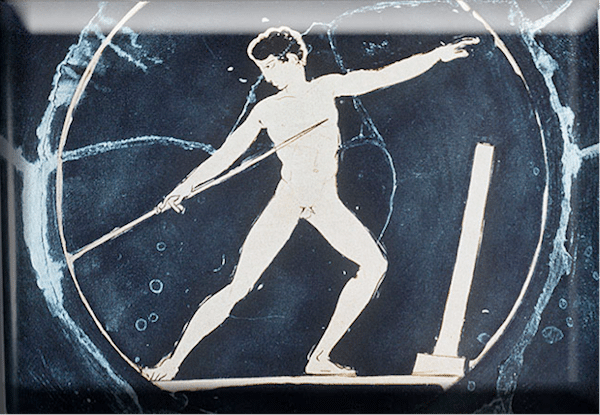

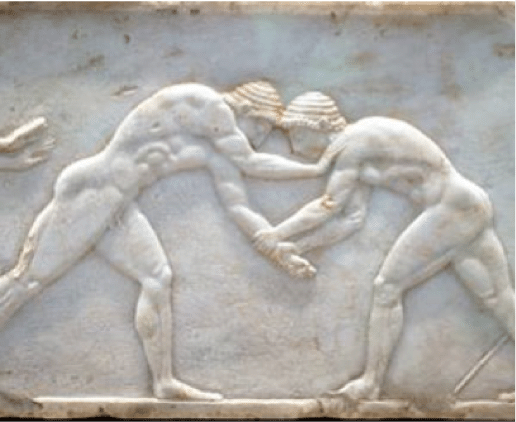
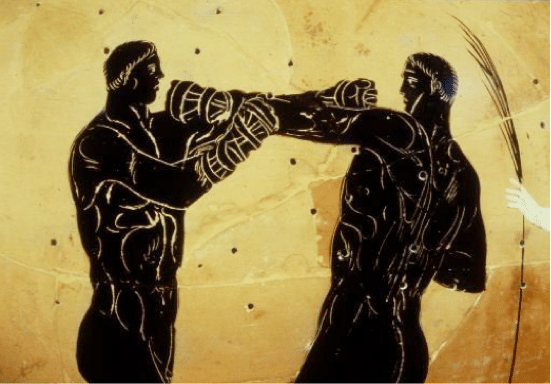
The images in a higher place demonstrate the sports the Greeks trained for and competed in during their Olympics games. The events concentrated on natural movements, like running, and martial skills, like fighting.
Outside of military grooming and sports, Greeks, and afterward the Romans, celebrated the body's beauty and strength and embraced physical preparation as a philosophical platonic and an essential part of a complete instruction. They historic the idea of having a sound mind, in a audio body. Physical culture started to rise beyond applied necessities to become a means to an end — an "art de vivre."
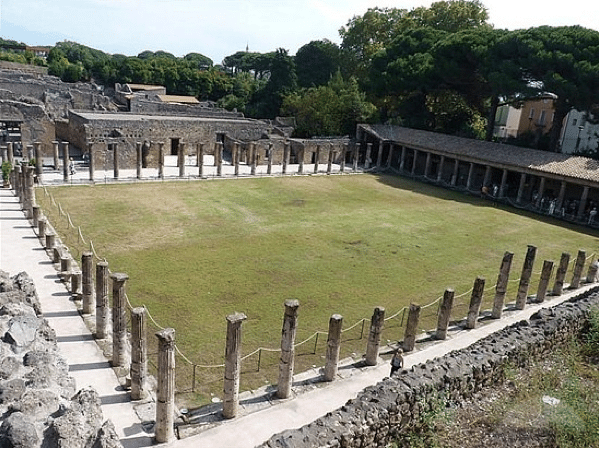
Remains of a "gymnasia," an early version of our modernistic gyms.
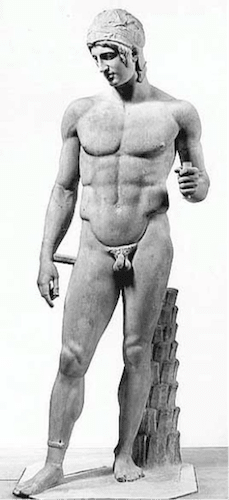
Antique sculpture representing ideal athleticism.
The Dark Ages: The Rejection of the Body
Lasting from the fifth to the 15th century, the Middle Ages were a chaotic period with a succession of kingdoms and empires, waves of barbarian invasions, and devastating plagues. The teachings of Christianity spread the belief that the master concern of ane's lifetime was preparing for the afterlife. The body was seen as sinful and unimportant — it was a human's soul that was his true essence. Teaching was overwhelmingly connected to the Church building, and focused on cultivating the mind rather than training the body.
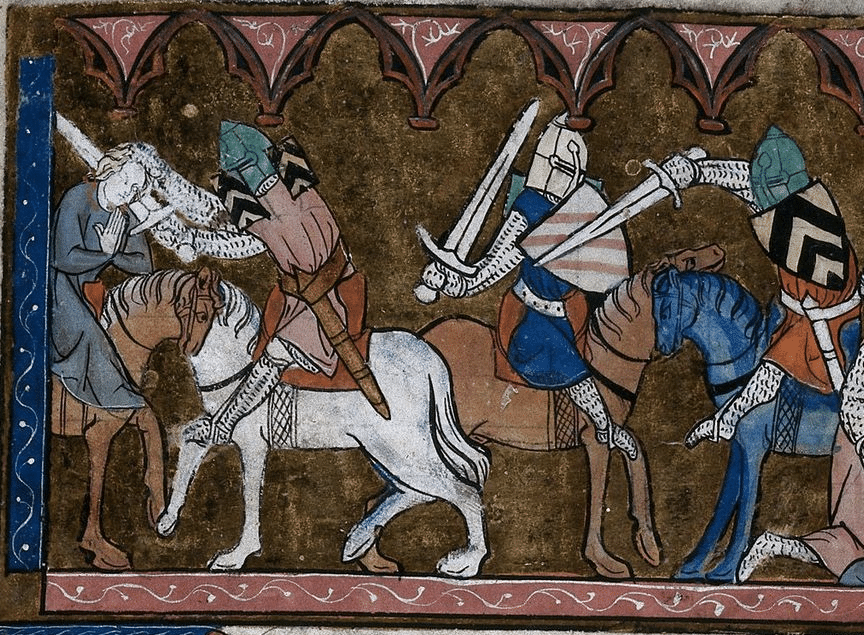
Nether feudalism, the dominant social system in medieval Europe, only nobles and mercenaries underwent physical training for military service. Similarly to ancient times, their training centered on natural movements and martial skills.
The remainder of the population were mostly peasants obliged to live on their lord's country and work extremely hard in fields using rudimentary tools. Their "do" came through hard labor.
The Renaissance: A Fresh Get-go
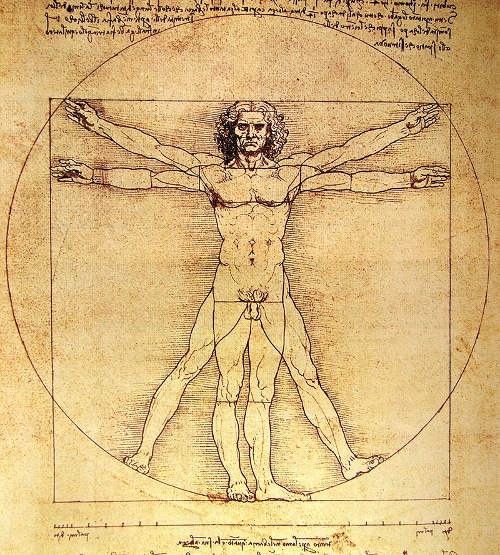
The Renaissance Era (from effectually 1400 to 1600) prompted a much greater and open interest in the body, beefcake, biology, health, and concrete didactics.
In 1420, Vittorino da Feltre, an Italian humanist and one of the starting time modern educators, opened a very popular school where, beyond the humanist subjects, a special accent was placed on physical didactics.
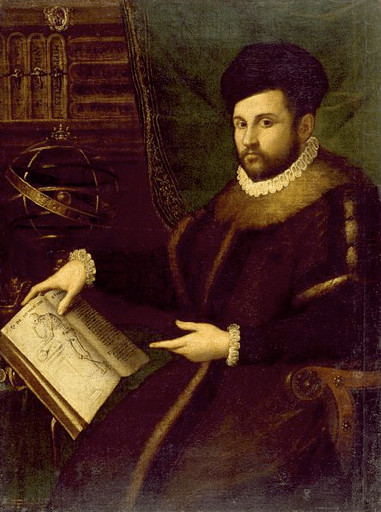
Cristobal Mendez
In 1553, El Libro del Ejercicio Corporal y Sus Provechos, past Spaniard Cristobal Mendez, was the showtime book to exclusively address physical exercise and its benefits. In the book, exercises, games, and sports are classified, analyzed, and described from a medical standpoint, and advice is offered on how to forestall and recover from injuries resulting from these concrete pursuits. Several chapters even provide specific advice on particular drills and games for women, children, and the elderly.
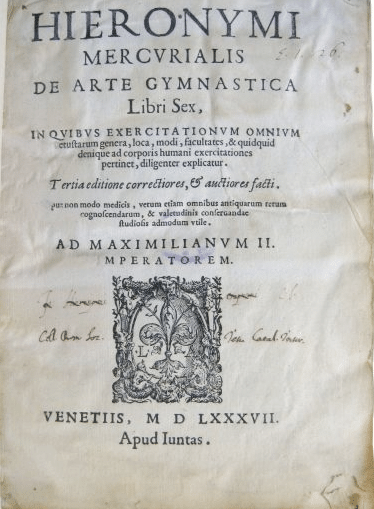
xvi years later, Mercurialis, an Italian doc, published De Arte Gymnastica. It was the culmination of his studies of classical and medical literature, particularly the aboriginal Greeks' and Romans' arroyo to hygiene, diet, and exercise, and their use of natural methods for the treatment of disease. Laying out the principles of concrete therapy for the offset fourth dimension, and accompanied with cute illustrations (even though they were largely creative speculations), it is considered the first book on sports medicine, and strongly influenced the wave of physical pedagogy and training methods that started to emerge in Europe two centuries afterward.
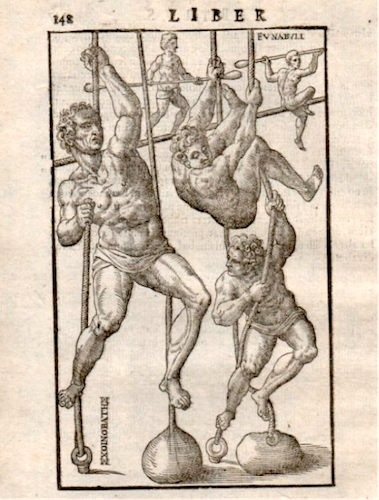
Climbing and balancing practice as depicted inDe Arte Gymnastica.
The Former Times: Fit for the Homeland
The Industrial Revolution, marking the transition from manual product methods to machine-based manufacturing processes, began around 1760 and speedily generated social, economic, and cultural trends that changed the mode people lived, worked, and of class, moved. As people became more sedentary, a new movement towards intentional physical do arose. This movement was given a heave in the 19th century from the rise of a nationalistic fervor in many counties in Europe. Staying healthy, fit, and set to serve in boxing became a bespeak of civic duty and pride.
In Europe
In 1774, Johann Bernard Basedow, influenced by Rousseau'due south ideas of the "Natural Human," opened the Philanthropinum in Deutschland, with an emphasis on physical exercise and games, including wrestling, running, riding, fencing, vaulting, and dancing. Even the school's uniforms, which were ofttimes heavy and constricting during this time menstruum, were made more comfortable to allow students greater freedom of motion. This model inspired the founding of many similar institutions, and physical preparation began to get more systemized and included as an integral part of the educational curriculum.
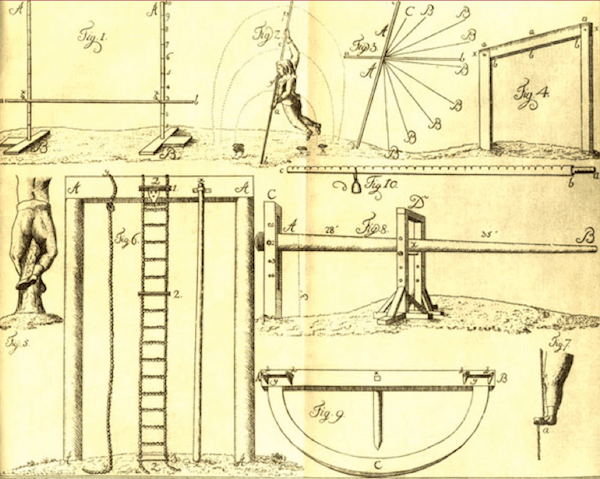
Some of the apparatuses designed by Muths. Establish in Gymnastik für die Jugend.
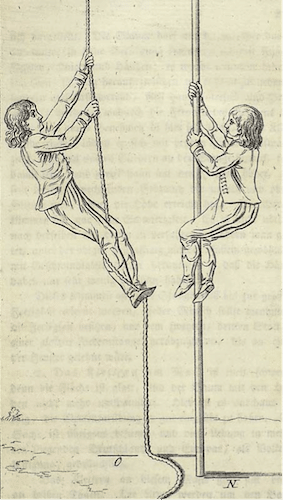
Climbing vertical pole or rope. In Gymnastik für dice Jugend.
Xx years later on, Guts Muths, another German instructor and educator, developed the basic principles of artistic gymnastics, for which he is regarded equally the "Swell Grandpa of Gymnastics." His Gymnastik für die Jugend (Gymnastics For the Youth), the showtime systematic textbook in gymnastics, was published in 1800 and became a standard reference for physical education in the English language-speaking globe.
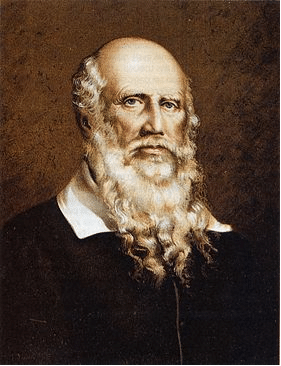
Friedrich Jahn (1778-1852), known as "The begetter of gymnastics."
In 1810 Friedrich Jahn came on the physical culture scene. Known as "The Begetter of Gymnastics," he was an essential pioneer of physical teaching, and his ideas spread throughout Europe and America. A German gymnastics educator and ardent nationalist who had lived through Napoleon's invasion of his land, he felt the best way to forbid another such incursion was to help his people develop their bodies and minds. To this end, he led young men on fresh-air expeditions and taught them gymnastics and calisthenics to restore their physical and moral forcefulness.
In 1811, Jahn opened the start Turnplatz, or open-air gymnasium, in Berlin. His gymnastics movement, then chosen the Turnverein, spread rapidly throughout the land, and in 1816 he published Die Deutsche Turnkunst (The German Gymnastics) dedicated to his gymnastics system.
In addition to these contributions to concrete culture, Jahn invented the pommel horse and horizontal and parallel bars, and promoted the use of gymnastic rings. The concrete civilisation festivals he sponsored attracted as many as xxx,000 enthusiasts, simply the essence and end goal of his gymnastics and calisthenics methods were above all applied and functional, not creative. He advocated the do of the traditional natural movements like running, balancing, jumping, climbing, and then on.
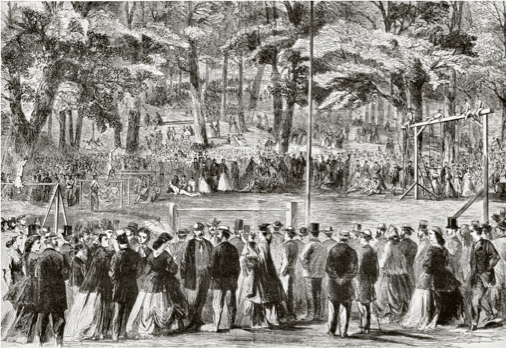
An early gymnastics festival in Federal republic of germany.
Well-informed of this German model, also as the ancient tradition of athletics, Swede Pehr Henrik Ling developed principles of physical development, emphasizing the integration of perfect bodily development with muscular beauty. By contrast with the German system, this Swedish system promoted "calorie-free gymnastics," employing niggling, if any apparatuses (Ling invented wall bars) and focusing on calisthenics, breathing, and stretching exercises every bit well as massage.
Swedish gymnastics had four categories: pedagogic, military, medical, and aesthetic. All movements had to be performed correctly and collectively in a freestanding style under a leader'southward direction, which differed from the predominant, more than mobile, strenuous, and practical German approach. Aspects of this method can still be traced in some modern programs of concrete preparation.
Around the exact same time, Spaniard Francisco Amoros founded a military gymnastics schoolhouse in Madrid, then moved to Paris and established the Normal Gymnastic Civil and Military School in 1819. In 1830 he published A Guide to Physical, Gymnastic and Moral Pedagogy.
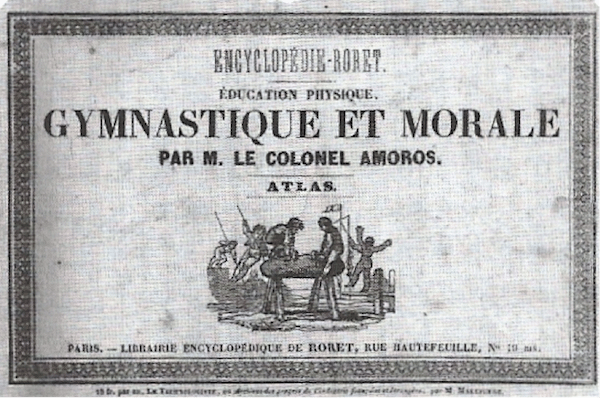
After being removed from his position as leader of the army'southward physical training program, he opened a popular civilian gymnastics hall in Paris and became the initiator of concrete teaching in France and Spain.
In 1847, French physical civilisation pioneer and strongman Hippolyte Triat founded a huge gymnasium in Paris where the conservative, aristocrats, and spirited youth joined in an enthusiastic pursuit of fitness.
In the 1870s later the loss of Alsace-Lorraine to the Germans, the already budding nationalistic mood in France exploded. Physical instruction became a master focus in French schools, as battalions of young men were trained to avenge the country.
In Scotland, the Highland Games began during the Romantic trend of the 1830s, and included traditional physical challenges distinctive to Scottish culture such equally caber tossing, hammer throwing, and the stone shot put, forth with running, wrestling, and jumping.

The practice methods developed by German physical culturists influenced English language physical education.
In England, Charles Darwin's concept of "survival of the fittest" gave that country's nascent concrete culture movement a boost. Englishmen wanted to be strong enough to rise to the top of nature's hierarchy. In 1849 the first English athletic competition was conducted at the Royal War machine University. Scot Archibald MacLaren opened a well-equipped gymnasium at the University of Oxford in 1858, where he trained 12 ground forces officers who so implemented his physical training regimen into the British Army.

University of Oxford gymnasium.
It is likewise worth mentioning the Czech Sokol movement. Founded in 1862, this youth sports and gymnastics organisation was inspired by the German Turnverein (Gymnastic Movement) and provided concrete, moral, and intellectual training for the nation through fettle programs (generally centered on marching drills, fencing, and various forms of weightlifting), lectures, group outings, and massive gymnastics festivals. This training extended to men of all economic classes, eventually to women, and ultimately to the entire Slavic world.
The Polish Falcons (1867) had similar aspirations. In addition to concrete training and athletic contests, such cultural groups often sponsored national or traditional dances, songs, and linguistic communication revivals. Everywhere in Europe people seemed to develop a fitness culture rooted in their ethnic or national identity.
As Europe entered the 20thursday century, French navy officer and physical educator Georges Hebert played a prominent function in moving physical culture forward – and did and so by taking a cue from the cultures of the past. Having studied the principles consort past his predecessors, including Jahn and Amoros, he pioneered his own "natural method." His method was entirely based on natural motion skills such as walking, running, balancing, jumping, crawling, climbing, manipulative skills (lifting, throwing, etc.), and self-defense – all of which were ofttimes practiced on obstacle courses. Hebert was responsible for the concrete training of all sailors in the French navy, and and so opened the largest and most mod indoor/outdoor preparation center in Reims in 1913.
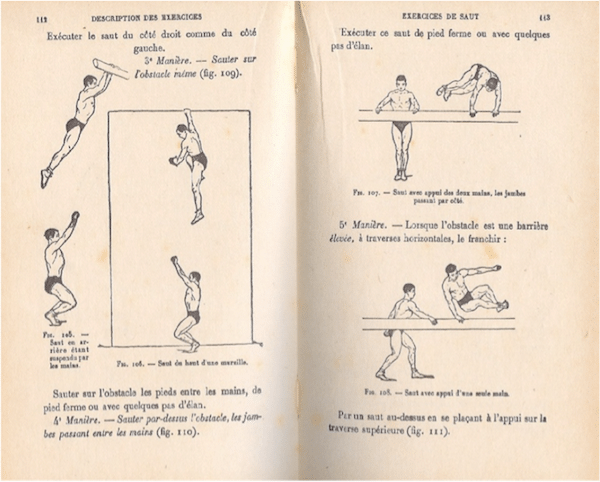
An excerpt from ane of Hebert's books.
Hebert published his first book, L'Educational activity Physique ou l'Entrainement Complet par la Methode Naturelle (Physical Teaching or Complete Training by the Natural Method), in 1912, followed by many other works on the same subject. The insights modern man tin glean from these seminal works will be the subject of my adjacent post.
In the USA
Since the threat of foreign invasion was never as bang-up in the United states every bit it was in Europe, the demand to prepare for state of war was not as acute, and thus an emphasis on physical culture came later to this country.
Catharine Beecher was one of the first pioneers to create an sensation of fitness in America. As a potent advocate for the inclusion of physical education in schools likewise as daily exercises for both sexes, she adult a program of calisthenics that were performed to music. When Beecher established the Hartford Female Seminary in 1823, it was the first major U.Southward. educational institution for women to implement physical teaching courses equally part of the plan.
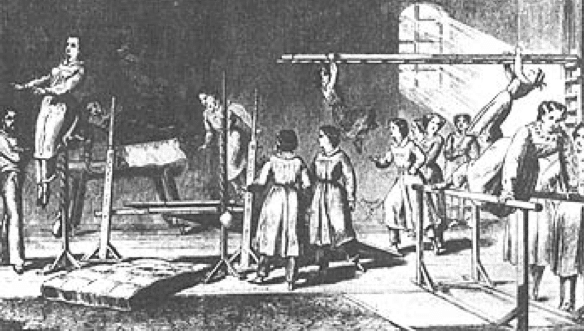
At the same time, European concrete culture traditions started to accept root in America. Many "Turners" (High german practitioners of Jahn's gymnastic system) emigrated to the US, and in 1824, German scholar Charles Beck opened an outdoors gymnasium in Massachusetts that was similar to Jahn's Turnplatz. It was the first gym in the nation and hosted the first school gymnastics program in the country.

Many other Turners became active in the American public education organization and strongly influenced it by opening clubs and teaching gymnastics in various states. One of the nearly notable practitioners of this European tradition was Dudley Allen Sargent, who is considered to be the founder of physical teaching in the United states. From 1879 until his retirement in 1919, he was director of the Hemenway Gymnasium at Harvard Academy, where he taught the German and Swedish systems that he had learned as a boyfriend. Sargent also challenged the Victorian view of females equally feeble and prone to fainting, and encouraged liberty of apparel and vigorous activity for girls and women.
Sargent invented multiple gymnasium apparatuses, created a Universal Exam for Strength, Speed and Endurance in 1902, wrote numerous articles and books on physical educational activity, and warned that "without solid concrete education programs, people would become fat, plain-featured, and impuissant."
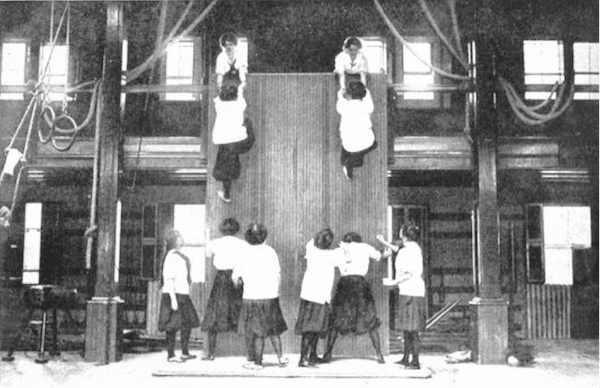
Practical and cooperative physical training. Your slap-up-grandma was preparation for the Spartan Race, before in that location was a Spartan Race.
The large takeaway from tracing the development of physical civilization both in Europe and the U.s.a. during this period is that these gymnastics systems were all very similar, and by and large based on a practical arroyo. "Gymnastics" or "calisthenics" at that time did not primarily convey the idea of acrobatics, just more utilitarian movement skills and the strength preparation that was essential to military preparedness and existent-life situations.
The exception to this trend was the introduction of apparatuses like the Gymnasticon. Invented in 1796, it was the forerunner of modernistic machine-based fitness.
![]()
Gymnasticon
The utilise of fitness equipment would choice upwards in the 20th century, as would the weights-based, strength-oriented strongman approach to physical culture. These two trends would lead to the modern fitness industry as nosotros know information technology.
The Rise of the Mod Fitness Industry
The 20th century marked the rise of specialized, competitive sports, as well as the emergence of a well-organized and thriving "fitness" market place and industry.
At the very first of the 20th century, at the aforementioned time Georges Hebert developed and promoted his "Natural Method," another Frenchman, Professor Edmond Desbonnet, managed to make physical exercise and strength grooming fashionable through the publication of fitness journals (he used photography to capture male and female athletes) and by opening a chain of do clubs. This laid a potent foundation for physical culture in Europe, merely also for "fitness" as an industry.
Desbonnet'southward system was a reaction confronting the decadence of the Belle Epoque, during which people lived without thinking on their physical condition and wellness. At the height of his popularity, he had more than 200 fettle centers, and several of the famous early on strongmen and bodybuilders were proponents of the Desbonnet method.
Being rather expensive, his fitness centers were frequented by the loftier class of French and European society before Globe War I. After the war, the working grade also started to gain access to the concrete culture move.
During the same period in the USA, Bernarr Macfadden came to prominence as an American physical civilization guru and salubrious living advocate. He recommended a minimalist lifestyle based on time spent in nature, daily vigorous concrete exercise, and the elimination of booze, tea, coffee, and white bread from i's nutrition.

Macfadden started to market a wall-mounted musculus developer that he had created, and founded one of the first muscle magazines, Physical Culture, in 1899. He staged the first physique contest in America in 1903, and similar competitions in 1921 and 1922 fostered the ascension of physical culture's greatest icon, Charles Atlas. By 1935, Macfadden's publishing empire had a full of 35 million readers, and he died a multimillionaire in 1955.
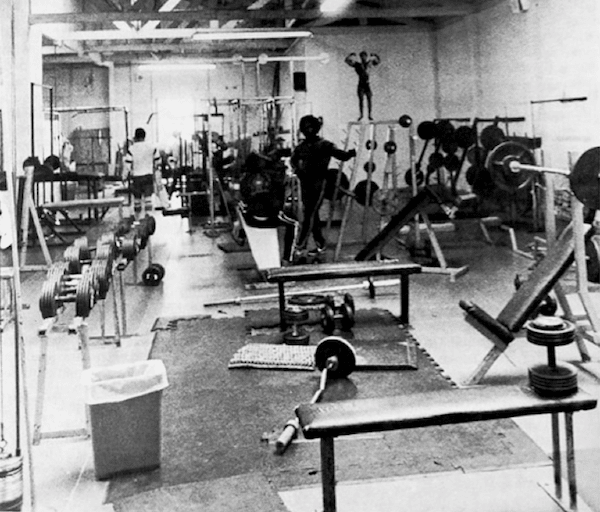
The "old schoolhouse" gym that emerged in the 20th century…is not so old schoolhouse afterwards all when looked at as part of a much longer history of physical fitness.
Desbonnet and Macfadden tin be seen as the precursors of the health and fitness industry every bit we know it. From there, we enter the historic period of confusion — the age of fettle-as-business and its many fads, with its current aesthetics-driven, body-building arroyo, the employ of increasingly sophisticated practice machines in gyms, home equipment, the huge supplement business, countless magazines, books, DVDs, an even now the emergence of tech-based exercise with numerous fitness apps.
Over the course of a century, thousands of methods and programs have emerged, all promising to go you in the all-time shape of your life in the quickest amount of time possible (with results by and large being limited to improvements in your physical appearance).

This short list is just a sampling of those methods and devices that people have given millions of dollars to in the past century: the vibrating chugalug, Jack LaLanne's Tv set tips and juicing, Jane Fonda's aerobics, Simmons's "Sweatin' to the Oldies" videos, the Bowflex domicile gyms, Thighmasters, 8 Infinitesimal Abs and Ab Rollers, Tae Bo, Pilates, Spinning, P90X, Wii Fit, Power Plates, Sauna Suits, Ability Wristbands, and many more.
If unregulated gimmicks sit on one side of the modernistic fettle dichotomy, on the other resides the study of exercise as a scientific discipline. Practise has been analyzed and quantified in laboratories, and enormous amounts of data have been clustered on the upshot of movement on the human torso. The professionals who make a career out of sifting through this information, and making recommendations based on it, are regulated through numerous organizations, associations, councils, federations, and commissions, including:
- Academy of Applied Personal Training Teaching
- American College of Sports Medicine
- American Quango on Exercise
- International Fitness Professionals Clan
- National Academy of Sports Medicine
- Any many more…
The Current Country of Physical Culture: Lost in Fettle
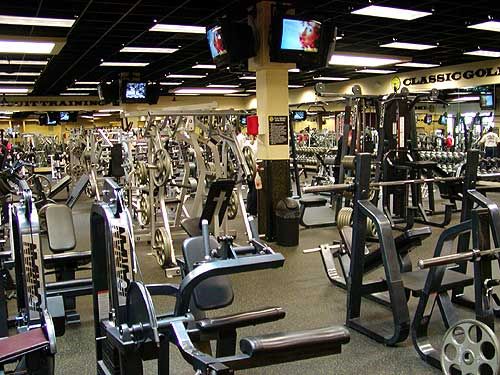
Every bit we reflect on the development of fettle over the centuries, and the different facets nowadays in our modern physical culture, information technology is well to inquire ourselves: what have we lost, and what take we gained?
Patently, much good has come out of these recent developments: there's widespread awareness of the importance of regular exercise, nearly every community has a gym where people tin work out, and we understand more well-nigh how the human being trunk works and responds to concrete training than we always have before.
Yet despite the plethora of wellness and fettle methods, programs, and resources, the general population has never been so physically sedentary and out-of-shape.
A recent World Health Organization study indicates that life expectancy in the U.S. dropped for first time since 1993. The health of modern people is declining, despite highly avant-garde medical technologies, and in spite of the thriving health and fitness industry. How could that exist?

Even though we take tons more devices and information nigh wellness and fitness than our ancestors did, we are in worse shape.
A large part of it is motivation. People are simply not every bit motivated to move their body and get healthy as they were in the past. Nosotros live in a society where the disability to operate one'south body in a practical and effective style is no longer an embarrassing condition.
In my opinion, the health and fitness industry as whole, no matter how "cutting-border" or "revolutionary" each new program claims to be, has failed to get the bulk of people to value, practice, and savor concrete exercise. Aside from a few exceptions, I believe that the industry has widely contributed to spreading a limited perception of what health and fitness are, and to people turning their dorsum on it.
Overwhelmingly, the most common perception of what it ways to exist fit, and the primary motivation for exercising, is to look fit. It is no longer almost having a healthy body that can actually do stuff that is practical to real life.
Overwhelmingly, the most mutual view on how to practice is that yous need machines for cardio and to build muscle and strength then yous wait proficient, and mayhap add a bit of stretching to the mix (there is equipment for that too). Throw in some vitamins and supplements, and yous're salubrious and fit!
Overwhelmingly, practise is a mere chore, non a pleasance; it's something people have to force themselves to do, not a natural expression of who they are.
Last just not least, many who attempt to address their fitness needs are confused as to what modality to choose. Nosotros accept lost clarity and simplicity. We have lost a sense of practicality. Nosotros accept lost naturalness.
A New Paradigm For the Hereafter
I see two radically dissimilar paradigms of the future of exercise on the horizon.
On the i hand, we're entering the age of ever-more advanced exercise machines that remove people from real life, nature, and what their bodies are naturally designed to exercise. I come across the age of fitness tech, with connected gadgets and their apps, sensors, and wires. The age of "bio-hacking" and practise efficiency, offering promises like: "Go fit in iii minutes of exercise a calendar week!" The era of ubiquitous self-quantification where people obsessively check out information curves on a screen, trying to manage their health and fitness in the most scientific way possible. What I run across starts to resemble a technological, trans-humanistic approach to the trunk's health. Is this actually where we should be headed?
Despite everything that the wellness and fitness industry provides, people accept never been and so physically inactive. So should we expect the answer to this predicament to come from fifty-fifty more varied, or more technologically advanced programs and equipment? Or will the solution come from a different mindset, a simpler approach and do, and overall a new culture?
My friend and functional motility expert Gray Cook once said, "Nosotros are meant to grow strong and to age gracefully. Reclamation of accurate movement is the starting point."
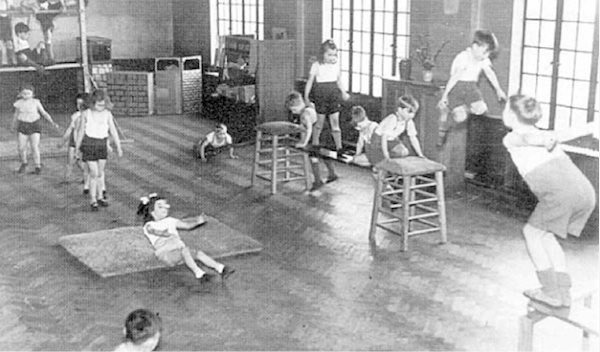
Showtime form physical education in America in the 50s: walking, running, balancing, jumping, itch, rolling, climbing. Elementary, effective, practical, enjoyable.
To become (and stay) stiff and healthy, the average Joe and Jane, which nearly of united states are, simply need to movement naturally, like all humans used to do not so long ago. We need to practice fundamental motion skills to develop a baseline of physical competence that is useful in real-life, tangible ways. Nosotros also need to employ a downwardly-to-world arroyo that is applied in both its practise and objectives, which people observe enjoyable, that is scalable and progressive, that doesn't compulsorily require very expensive custom-made equipment, and that can be done in groups.
And so permit me nowadays yous with the culling epitome that I envision for the time to come of physical exercise. For thousands of years, physical development followed a natural path; we used to move naturally with the demands of life. Tigers, bears, wild horses, gorillas, dolphins, eagles, etc. nonetheless exercise the same. We are still designed to follow evolution and nature. For hundreds of years, our predecessors have trusted in a design that provided firsthand usefulness and practical benefits to their lives.
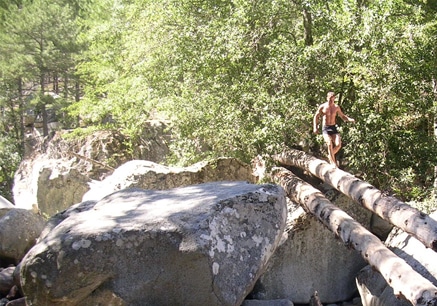
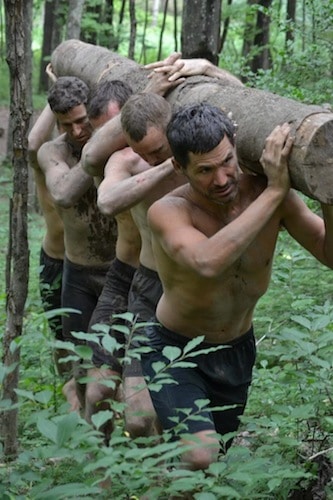

Natural motility, or practical physical operation, was at the core of do for centuries. Information technology was probably at the cadre of your own childhood years and play. While daddy was working out his guns with dumbbells in the lawn, the little guy that yous once were used to run, bound, rest, clamber, climb, carry, throw, and wrestle. Did you need machines or smartphone apps? Did y'all need to runway anything? Were you thinking of what muscles y'all were exercising? The answer to all of these is no, and all the same weren't yous having an absolute boom?
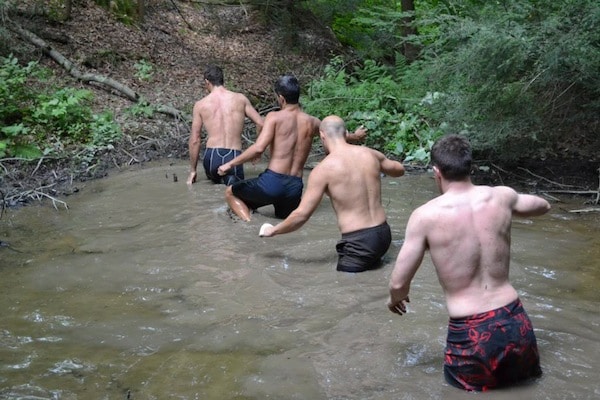

Just considering modern conveniences have obliterated the necessity to motility (if yous're hungry, just click and order a pizza online, right?) and simply considering the fitness industry has led us to believe that fettle happens only indoors with equipment, doesn't mean that our biological nature — our natural, evolutionary potential and need for circuitous and adaptable movements — has changed.
We don't have to take our sedentary lifestyle and be hemmed in by the machines we have created in club to go fit. Nosotros don't take to maintain a imitation dichotomy between strength and cardio, between the trunk and the mind, between fitness and health, or betwixt exercise every bit something nosotros do, and move and physical activity as an expression of who nosotros are.
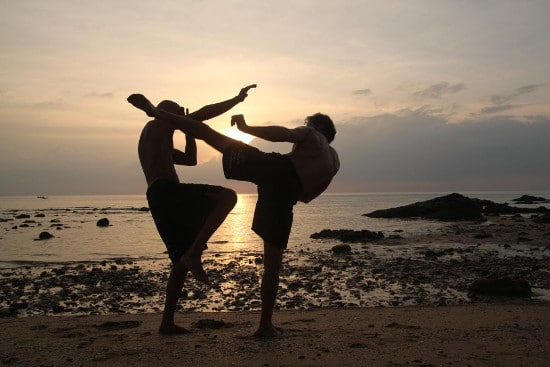
I believe that it is non only a biological duty, but too a moral duty for anybody to be equipped with the movement skills, strength, conditioning, and mental fortitude that are required to answer finer to the concrete demands of real life. I also believe that nature is what we all need — the nature exterior of usa, and just every bit chiefly, the physical nature within. Author Richard Louv puts it beautifully:
"The future will vest to the nature-smart. The more than loftier-tech we become, the more nature we need."
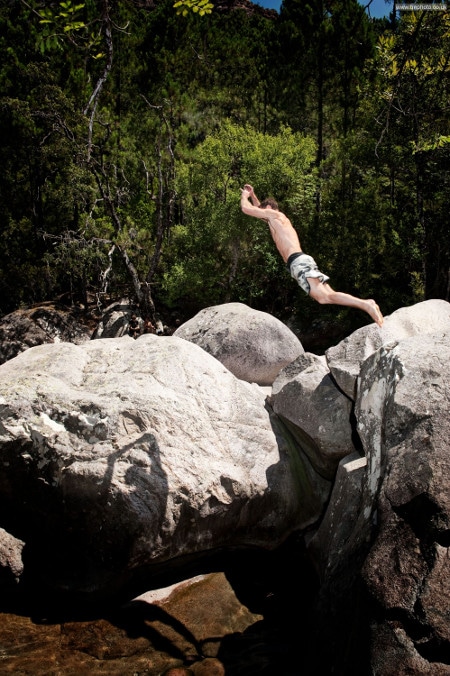
Alejandro Jodorowsky once said that "Birds born in a cage think flying is a sickness." We have learned to fail, distrust, and even fear our own natural movements. The truth is, we still take a real, natural potential for powerful, graceful, and useful movement. Motility so yous tin can be strong, and be strong so yous tin can be free.
Be sure to listen to my podcast interview with Erwan:
_______________________
Before starting the Natural Movement fitness trend worldwide in his late 30s, Erwan Le Corre has spent a lifetime pursuing a true, real-life fitness, from France to Brazil. Synthesizing his studies of ancient and modern physical preparation methodologies, martial arts, his experience in specialized sports and his expertise of grooming in nature, he founded what is now known as the MovNat method. You can read more most Erwan hither & here.
Previous Next
Source: https://www.artofmanliness.com/health-fitness/fitness/the-history-of-physical-fitness/